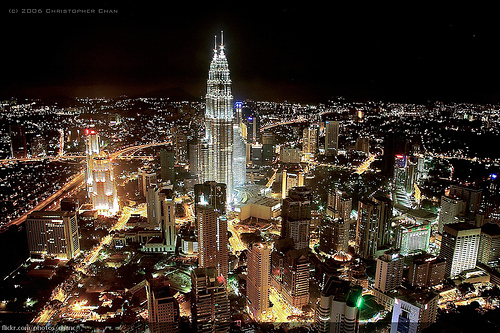August
31st, which falls on a Friday this year, marks the day my country
gained its independence from British colonial rule in 1957 (and 1963 for the
states of Sabah & Sarawak). We refer to this important day as “Hari Merdeka”, a day in which we are
reminded of the unforgettable scene that took place 55 years ago at Stadium Merdeka in Kuala Lumpur, where
our first Prime Minister, Tunku Abdul Rahman Putra Al-Haj, proclaimed the country's
independence and shouted out “Merdeka!” seven times as the new flag was raised.
 |
| Our first Prime Minister, Tunku Abdul Rahman Putra Al-Haj, at Stadium Merdeka in Kuala Lumpur on 31 August, 1957 |
Looking
back at the rapid development that Malaysia has undergone over the
years since that historical event, I cannot help but feel proud and grateful
for what we have managed to achieve thus far as a nation. Although I was raised as a “third culture kid”, no matter how far I’ve travelled and wherever
I have lived in this world, Malaysia
has and will always remain close to my heart.
Nonetheless,
as any concerned citizen, I have noticed that there remains certain elements in our eco-system and fabric of our society that has potential to cause
serious and long-term harm.
This
is why through Malaysia’s
transformation agenda and the quest to pursue our development goals towards
Vision 2020 and beyond, it is pertinent for the country to ensure that it is
integrating the three principles of sustainability – people, planet, and profit
– so that in meeting our development needs, we are not compromising the
ability of our future generations to meet theirs.
However, in order to achieve this balance, not only do we need the Government, but also industry, academia, and the rakyat (“the people”), whose active participation are as equally important in spurring the country’s growth on the national and global level. This “Quadruple Helix” model, which was adopted as part of Malaysia’s National Innovation Strategy, reminds us that as members of the rakyat, each of us has great potential to play a major role in contributing to the sustainable and transformational development of the country.
However, in order to achieve this balance, not only do we need the Government, but also industry, academia, and the rakyat (“the people”), whose active participation are as equally important in spurring the country’s growth on the national and global level. This “Quadruple Helix” model, which was adopted as part of Malaysia’s National Innovation Strategy, reminds us that as members of the rakyat, each of us has great potential to play a major role in contributing to the sustainable and transformational development of the country.
 |
| Kuala Lumpur, capital of Malaysia, at night |
We
have only one planet and on this planet, we Malaysians have only one Malaysia.
Approaching 55 years of independence, Malaysia has indeed made
significant strides in the course of its golden years but certainly there are
many more improvements to be made.
In this regard, it is crucial for our
leaders and policy-makers to identify and seek solutions to address existing
lacunae in the implementation of national policies and agendas.
Indeed,
I am truly blessed to be an “anak
Merdeka” of this beautiful country of endless possibilities. I hope that we
Malaysians will all make efforts to cooperate and collaborate together in achieving higher
standards of living and development that is socially, economically, and
environmentally sound. In
the words of our Prime Minister, Hon. Dato’ Sri Najib Tun Razak:
“We must continuously strive for
excellence; we cannot and must not compromise and settle for lower standards
and mediocrity. The challenge is for Malaysia to be better than the
best. While we should be proud of what we have achieved, we should not be
complacent as the world continues to move forward with new technologies, ideas
and discoveries. Change is the only constant. There is no escaping this trend
and we must strive to better ourselves and create an even better environment
for future generations.”
Terima kasih Malaysia for always welcoming me home with open arms and a warm bundle of nasi lemak wrapped in banana leaf.
I wish my fellow citizens in Malaysia and around the world a happy independence day - SELAMAT HARI MERDEKA!
Check out the "Malaysia Truly Asia" video below. I grew up with this song :)




